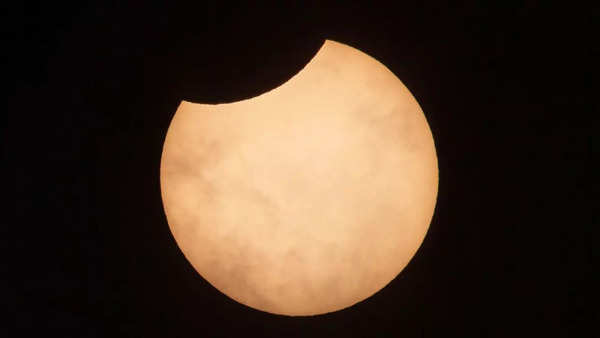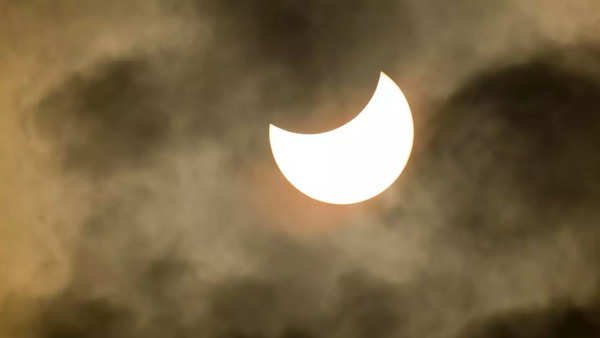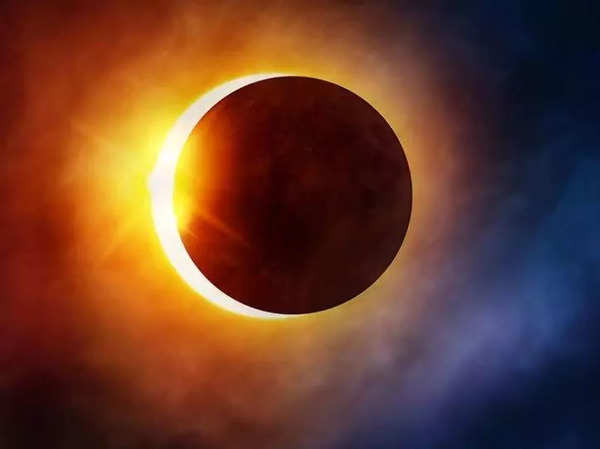A solar eclipse, or Surya Grahan, is one of the most interesting celestial events that happens when the Moon moves between the Earth and the Sun, temporarily blocking sunlight, either partially or completely. Historically solar eclipses have been a part of curiosity and fear in which different cultures attach various myths and beliefs to them.
In 2025, India will witness two solar eclipses, one in March and another in September. These events are not just an interesting scape for space enthusiasts but also hold deep cultural and spiritual significance in India. While science sees an eclipse as a natural cosmic event, many people in India still follow traditional rituals and customs during this time.
The first solar eclipse of 2025 will take place on March 29, and it will be a partial solar eclipse. The second one, happening on September 21, will be an annular eclipse, this means that the Moon will cover the Sun but won’t block it entirely, leaving behind a stunning “Ring of Fire” effect in the sky.
Beyond the beauty and mystery of an eclipse, these events also hold a scientific significance. For astronomers, it’s a rare chance to study the Sun’s corona or the outer atmosphere, light diffraction, and other cosmic phenomena. On the other hand, many people observe age-old traditions, such as avoiding food during an eclipse, taking a bath afterward, or performing special prayers. Whether you see it as a spiritual event or a scientific one, solar eclipses remain one of the most awe-inspiring celestial occurrences to witness.

What are the types of Solar Eclipses?
Before exploring the details of the 2025 solar eclipses, it’s important to understand the different types of solar eclipses and how they occur. There are four main types and each has its own characteristics.
A Total Solar Eclipse occurs when the Moon completely covers the Sun, casting a shadow on Earth and turning day into night for a few minutes. During this rare event, the Sun’s outer atmosphere (corona) becomes visible, creating a beautiful sight. Only people in the narrow path of totality can witness the complete darkening of the Sun.
In contrast, a Partial Solar Eclipse happens when the Moon covers only a portion of the Sun, making it look like a dark “bite” has been taken out of it. The level of darkness depends on the position of the Moon and the observer’s location. Unlike a total eclipse, a partial eclipse does not result in complete darkness but still creates an interesting visual scene.
An Annular Solar Eclipse occurs when the Moon is too far from Earth to completely cover the Sun, leaving a bright outer ring of sunlight, commonly known as the “Ring of Fire.” This happens because the Moon’s orbit is not perfectly circular, meaning its distance from Earth varies. This stunning view is highly anticipated by viewers.
Lastly, a Hybrid Solar Eclipse is the rarest type. It shifts between a total and annular eclipse depending on the observer’s location on Earth. In some places, viewers may see a total eclipse, while in others, an annular eclipse appears.
Here are the dates, timings, visibility details, and the importance of the Solar Eclipse 2025

Will this solar eclipse be visible in India?
Unfortunately, India will not have the opportunity to witness this astronomical event. This eclipse offers a rare chance to observe the Sun being temporarily obscured, showcasing a fascinating celestial alignment.
What is the date and timing of the eclipse?
This solar eclipse of 2025 is set to take place on Saturday, March 29. The eclipse will begin at 4:50 AM EDT (2:20 PM IST), reach its peak at 6:47 AM EDT (4:17 PM IST), and conclude around 8:43 AM EDT. However, due to the Earth’s alignment and the timing of the event, this celestial phenomenon will not be visible from India. Despite this, astronomy enthusiasts can follow live streams and scientific coverage to witness the event remotely.
Astrological and religious beliefs about surya grahan in India.
In India, solar eclipses, or Surya Grahan, have deep-rooted significance in astrology and religious traditions. Many people believe that eclipses bring a temporary imbalance in cosmic energies, leading to various rituals and precautions being followed. One common practice is avoiding food and water during the eclipse, as it is believed that negative energies or harmful radiation could affect anything consumed during this period. Some people also fast until the eclipse has passed.
Another widespread belief is the chanting of sacred mantras, such as the Gayatri Mantra and the Mahamrityunjaya Mantra. These chants are thought to ward off negative influences and promote spiritual well-being. Taking a holy bath before and after the eclipse is also a common practice, as it is said to purify the body and soul from any negative effects of the celestial event. Many temples remain closed during the eclipse, and devotees avoid performing religious ceremonies until it is over.

Pregnant women are advised to take extra precautions during a solar eclipse. According to traditional beliefs, they should stay indoors and avoid using sharp objects like knives and scissors, as it is thought that exposure to the eclipse could harm the unborn child. Though these beliefs have been passed down for generations, modern science clarifies that solar eclipses are completely natural astronomical events with no direct impact on human health. While many people continue to follow these age-old traditions, others choose to observe the eclipse purely for its scientific and astronomical significance.
Precautions to take during Solar Eclipse 2025
A solar eclipse is an interesting celestial event, but viewing it without proper precautions can be extremely dangerous. The Sun’s rays remain powerful even when partially covered by the Moon, and looking directly at it without protection can cause permanent eye damage. One of the most important safety measures is to never look directly at the Sun, even during the peak of the eclipse. The harmful ultraviolet and infrared radiation can burn the retina, leading to a condition called solar retinopathy, which can result in blindness.
To safely observe the eclipse, one must use protective eclipse glasses that meet the international safety standard ISO 12312-2. These specialized glasses block harmful rays while allowing safe viewing. Regular sunglasses, even dark ones, are not safe as they do not provide adequate protection. Similarly, homemade filters like X-ray films, tinted glass, or smoked glass should never be used, as they do not effectively block harmful solar radiation.

Solar Eclipse 2025
For those who do not have access to eclipse glasses, an alternative method is to use a pinhole projector to indirectly view the eclipse. This simple device projects the Sun’s image onto a surface, allowing people to observe the event safely. Another safe option is to watch live streams of the eclipse, as organizations like NASA, ISRO, and other space agencies provide real-time broadcasts with expert commentary.
Taking these precautions ensures that people can enjoy the beauty of a solar eclipse without putting their eyesight at risk. Whether one follows the eclipse for scientific interest or cultural beliefs, safety should always be a priority.
